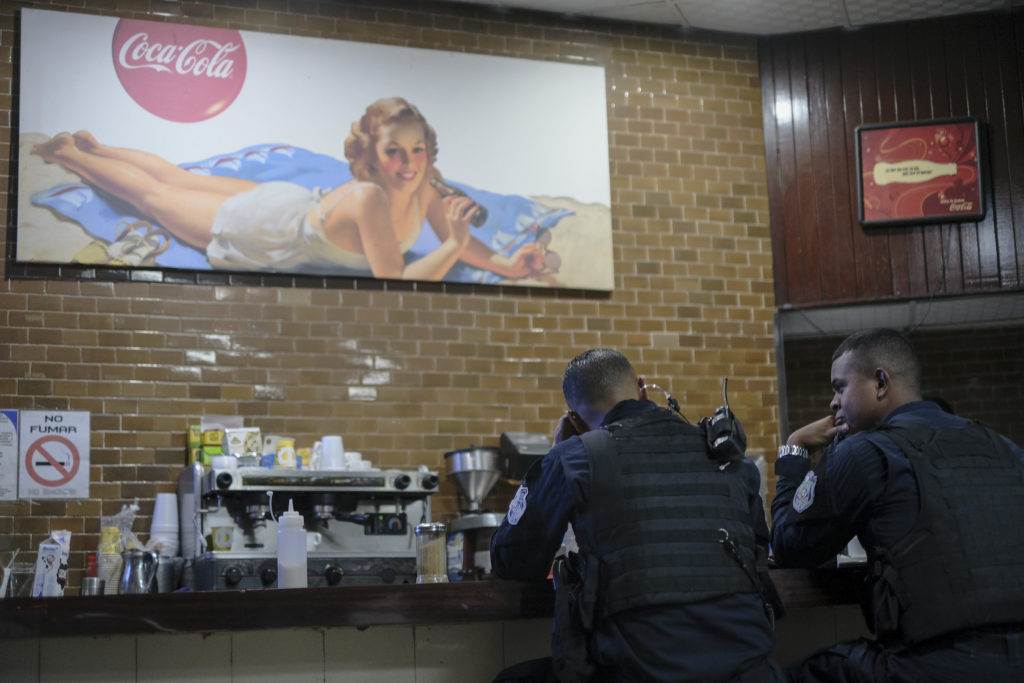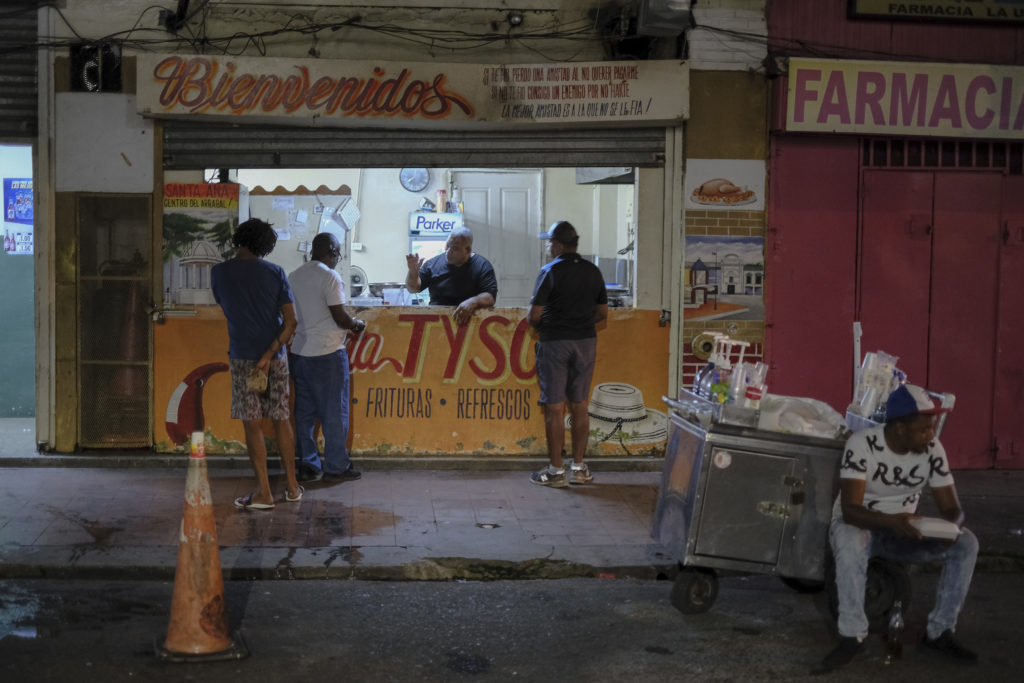Panama City
After commuting for 33 hours, I arrive in Panama City in the evening. There’s just enough time to walk around Casco Viejo, the old city, which at first glance feels rather unfriendly with its short streets and uneven lighting.
Large patches of shadow challenge the pedestrian. Everyone looks wary and walks quickly. My decision to sling my camera doesn’t seem too wise. But far from being run down, many buildings have been restored and gentrified into quiet restaurants pulsing with mood lighting. They look expensive, even from the outside. I am on an artist’s budget, so I head for the Coca-Cola Cafe, a recommendation from my hostel. Inside, a pair of cops are sat at the bar, instantly negating the unfriendly African men who glared when I walked though the doors. The cafe is homely and old-fashioned in that mix of American diner and family restaurant. A Coca-Cola girl smiles down on all of us, bestowing fizzy life and love from a cooler of glass Cola bottles.

There are riots sparking in Bolivia and Barcelona on the television. The menu is understandable, but I thought my translation app would allow me to converse. Not so. The quick-fire Spanish I overhear catches me off guard and I have to end every interaction with a pathetic “no habla Espanol.”
I decide to walk a little beyond the pretty buildings after dinner. The streets quickly shift to being a lot grimier. Rough looking youth loiter on street corners, sharing space with old men declaiming outside family-owned mercados (markets) and corner rent-a-cops, hard-eyed and unsmiling.

I pass three instances of religious fervour; a man preaching to a bunch of bored pigeons in a park, another man, seen through clear glass doors, holding a mid-week service and the last the impassioned sounds of prayer and tongues in Spanish coming from the ruins of a building. An enterprising pastor has set up a PA system and he was busy praying for and delivering people from within half-finished masonry. Not all of God’s work is done in the light.
